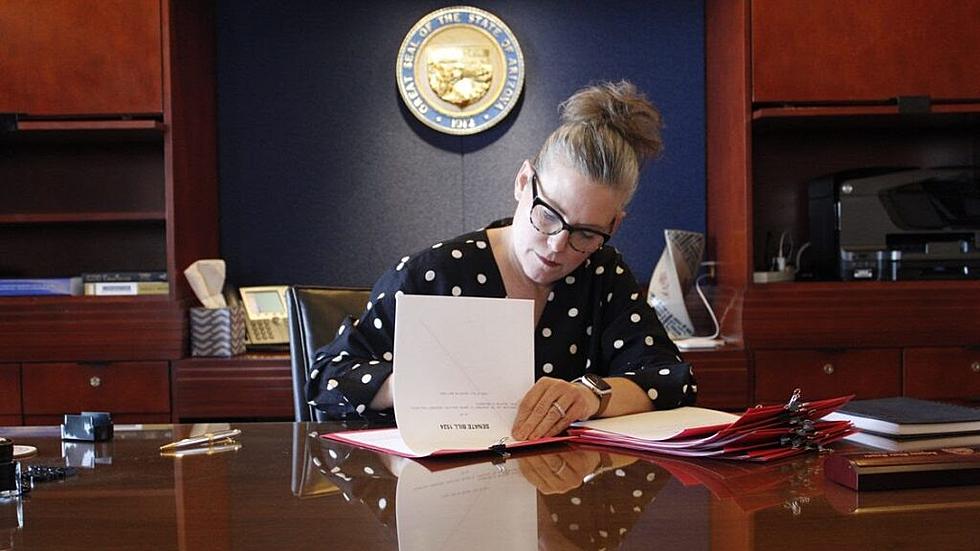
Hobbs proposes $16B budget that GOP calls ‘unserious mess’
Caitlin Sievers
(Arizona Mirror) Gov. Katie Hobbs on Friday released her proposed $16 billion budget for the 2025 fiscal year, as well as her plan for shoring up what she estimates will be a roughly $460 million deficit in the current budget with a variety of proposals that Republicans say are dead on arrival.
While this plan highlights the Democratic governor’s priorities when it comes to Arizona’s spending over the next year, several of her proposals for cuts will never make it past the Republican-controlled legislature — and several have already been relegated to the trash pile.
One of those proposals is a significant change to qualification requirements for the universal school voucher program that Republicans created in 2022.
In response to Hobbs’ budget release, which they described in a joint statement as “wildly unrealistic,” both Senate President Warren Petersen and House Speaker Ben Toma vowed to block it.
The cost of the voucher program, which prior to the expansion served a much smaller group of students, has skyrocketed this year far beyond projected costs. The current year’s budget estimates the program’s cost at $625 million with a total enrollment of 68,380 students, but revised estimates place this year’s cost at around $723.5 million with an enrollment of more than 74,000.
The Hobbs budget proposes a requirement for all students who receive a voucher to have previously attended a public school for at least 100 days — including students who are already using vouchers. This means that voucher recipients who are currently attending a private school and who haven’t previously attended public school would have to enroll in public school in the fall, before qualifying for a voucher. If they don’t, then they wouldn’t qualify for a voucher next school year
The Hobbs administration estimates that almost 50,000 of the students currently using vouchers don’t have any history of attending public schools, and says removing them from the voucher program would save the state $244.3 million in the upcoming year.
If many students made the switch, it could cause logistical issues for schools and parents, but the Hobbs administration does not believe that would happen.
“We believe that the state shouldn’t be subsidizing parents who were already sending kids to private schools,” Hobbs spokesman Christian Slater told the Arizona Mirror. “So, when you look at the program, if you’re already sending your kid to the private school without having ever sent them to a public school, we don’t believe that’s going to move back to public school.”
Hobbs is also proposing a repeal of the School Tuition Organization scholarship program in 2025, saving $185 million in 2026, with savings expected to increase to $230 million in 2027. The STO program, created in 1998, allows certified organizations to receive income tax credit donations to fund student scholarships for private schools.
Hobbs’ staff told reporters that they were unsure of how many participants are currently attending private schools on these scholarships.
In their response to Hobbs’ proposed budget, legislative Republicans pointed out that her proposed repeal of the STO program would run up against a 1992 amendment to the Arizona Constitution that requires a two-thirds vote in both legislative chambers to increase taxes.
They described the proposal as a tax increase that would hurt students and families
“Like last year’s proposal, the Governor’s budget is an unserious mess,” House Appropriations Chairman David Livingston, R-Peoria, said in the statement. “Her revenue and enrollment predictions don’t reflect reality, and her solution to the deficit proposes cuts to K-12 and water investments.
“We understand most of this is to appeal to her base. When she is willing to engage more seriously, Republicans are ready.”
